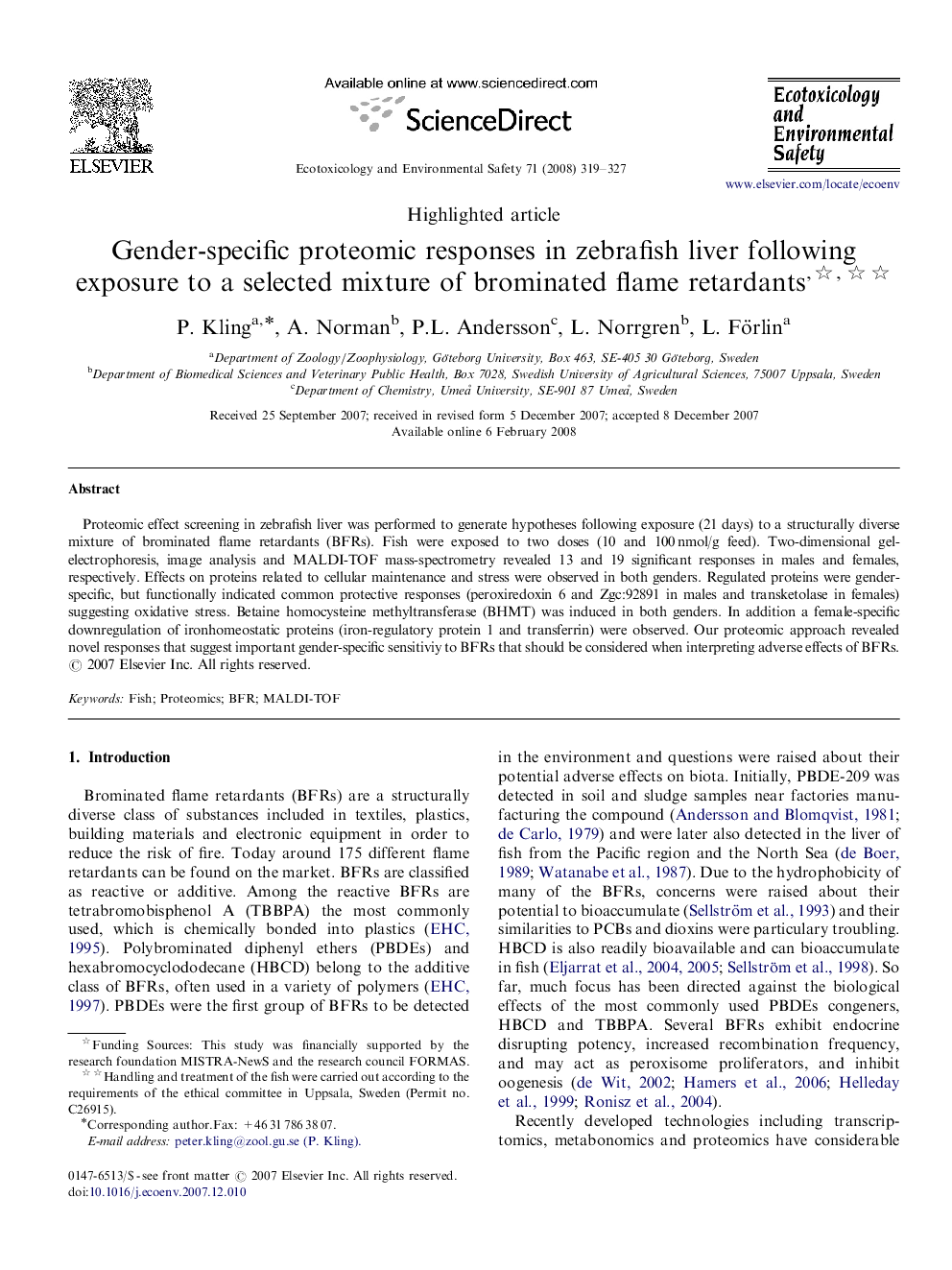| Article ID | Journal | Published Year | Pages | File Type |
|---|---|---|---|---|
| 4422042 | Ecotoxicology and Environmental Safety | 2008 | 9 Pages |
Proteomic effect screening in zebrafish liver was performed to generate hypotheses following exposure (21 days) to a structurally diverse mixture of brominated flame retardants (BFRs). Fish were exposed to two doses (10 and 100 nmol/g feed). Two-dimensional gel-electrophoresis, image analysis and MALDI-TOF mass-spectrometry revealed 13 and 19 significant responses in males and females, respectively. Effects on proteins related to cellular maintenance and stress were observed in both genders. Regulated proteins were gender-specific, but functionally indicated common protective responses (peroxiredoxin 6 and Zgc:92891 in males and transketolase in females) suggesting oxidative stress. Betaine homocysteine methyltransferase (BHMT) was induced in both genders. In addition a female-specific downregulation of ironhomeostatic proteins (iron-regulatory protein 1 and transferrin) were observed. Our proteomic approach revealed novel responses that suggest important gender-specific sensitiviy to BFRs that should be considered when interpreting adverse effects of BFRs.
